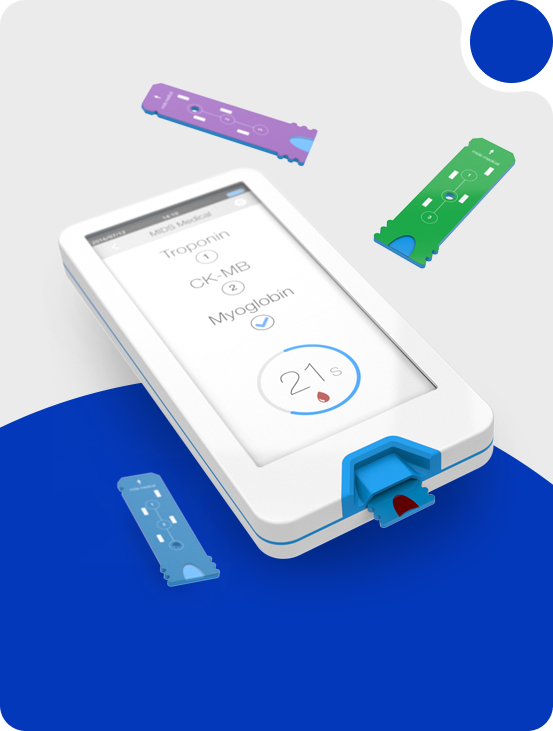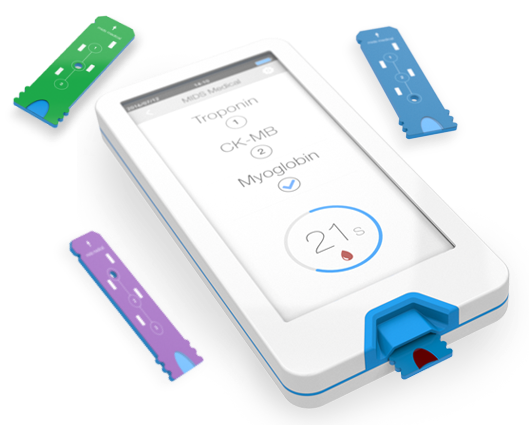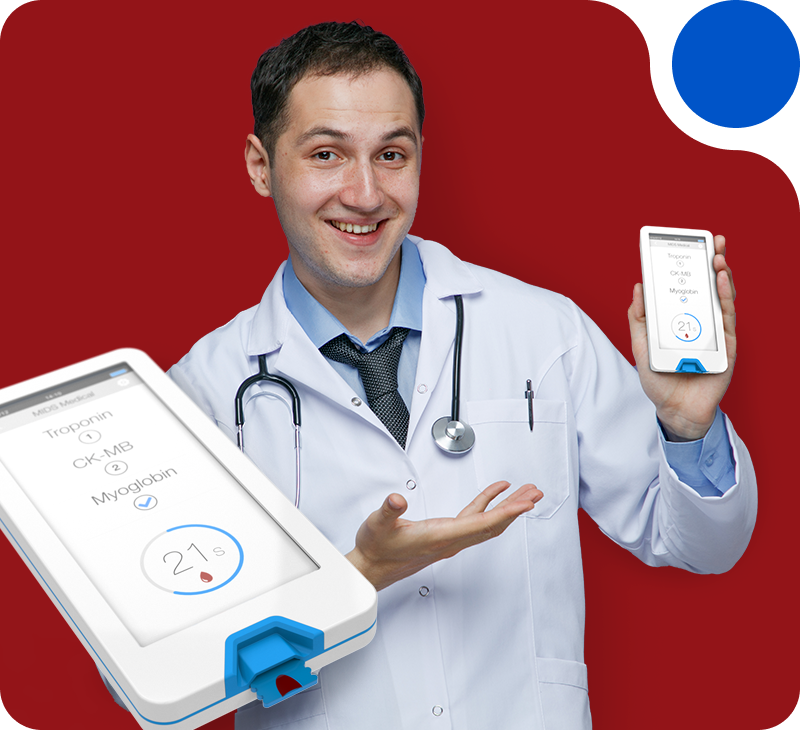
The NanoTesla Dx patented technology aims to revolutionise Point of Care immunoassay testing.
Conventional assay technology relies on the manipulation of microscopic paramagnetic assay beads. These only become magnetic when placed in a very strong magnetic field. Beads responding to an analyte are displaced and magnetically concentrated for detection/measurement; typically, in plate wells, in nitrocellulose strip test lines or in a microfluidic strip deposition area.
After magnetic concentration, standard analysers (laboratory analysers) detect and measure the captured beads using optical technology. This limits sensitivity and accuracy, especially in smaller Point of Care devices where instrument quality is constrained by cost and/or size.
Highly sensitive magnetic detection systems have long been sought. To work they must overcome a fundamental limiting problem: how to meaningfully detect the bead signal within the massively larger inducing magnetic field.
While other devices are limited to imperfect optical detection, NanoTesla Dx can detect magnetically to a whole new level of accuracy. Key to this is NanoTesla Dx’s ability to smartly differentiate the nano-Tesla magnetic signature of the aggregated assay beads from the relatively large ambient bias magnetic field required to induce their paramagnetic status.
Because the assay beads can all be ‘seen’ and measured magnetically, no bead is missed from the measurement which increases the accuracy and sensitivity, unlike in optical systems. In non-technical language the patented NanoTesla Dx system can detect ‘the eye of the needle in the haystack.’
NanoTesla Dx next phase of development aims to embody the NanoTesla Dx nano magnetic technology onto a disposable microfluidic test strip incorporating a high sensitivity cardiac Troponin assay.
We believe the NanoTesla Dx system can first be applied to High Sensitivity Troponin tests for cardiac events at the Point of Care, a largely unmet medical need. Accuracy on a level matching state of the art central laboratory analyzers should be possible on a low cost, hand-held device and LoC disposable test strip, available at the Point of Care.
The NanoTesla Dx Cardiac system would work with very low fluid sample volumes, typically less than 5 μL (one untreated, small finger stick drop) for a single biomarker test – an industry leading low volume. This will allow an assay on an easy to use, lab-on chip strip; after the first touch of finger stick blood to the microfluidic strip the test process is entirely automated.
A successful development of NanoTesla Dx Cardiac will validate the NanoTesla Dx technology generally. We believe that NanoTesla Dx can be applied to virtually any immunoassay test utilising paramagnetic assay beads. This opens up enormous value potential – a single device supporting multiple tests running on the NanoTesla Dx universal platform.
The highest performing cardiac biomarker POC devices have a coefficient of variance in the 10% range at the 99th percentile (CV), although in reality they are unable to detect very low biomarker levels. By example, the POC device claiming to be the only one which conforms to tightened FDA guidance claims the device only achieves this CV at a detection of 36 ng /L. We believe our ability to measure the aggregated nano-Tesla paramagnetic signature of the particles themselves, when applied for example to HS cTn assays, will achieve > 5% CV on assays down to 2 ng cTn /l. Accuracy on this level matches state of the art central laboratory analyzers.
Our measurement technique should also require very low volumes of fluid sample, typically less than 5 μL (one small drop) for a single biomarker test using a finger stick blood sample on a microfluidic test strip for cTn- an industry leading low volume. This untreated finger stick sample innovation is material: competitor POC devices require, as a minimum, several times this whole blood volume. Blood volume required by competitors are typically (venous blood) 100 – 200 µl, and can be as high as 2 ml (2000 µl). Many competitor blood samples also require pre-treatment (Heparain, EDTA). Our ability to use a very small & untreated sample allows us to contain an assay on a single easy to use lab-on chip strip; after the first touch of finger stick blood to the microfluidic strip the test is entirely automated.

We also expect to produce a quantitative cTn result much faster than any other POC device – within minutes and a quantitative, multiplexed test, again from a single finger stick sample, over a panel of 3 Cardiac biomarkers on a single test strip, in a few more minutes.
A successful development of NanoTesla Dx Cardiac would validate the NanoTesla Dx technology. We believe that NanoTesla Dx can be applied to virtually any immunoassay test using magnetic assay beads, opening up enormous possibilities – a single device supporting multiple assay types on specific test strips of the same platform design




NanoTesla Dx world class team is developing POC hand held devices using a next-generation nano magnetic medical diagnostic technology.
© 2023 NanoTesla Dx. All rights reserved.